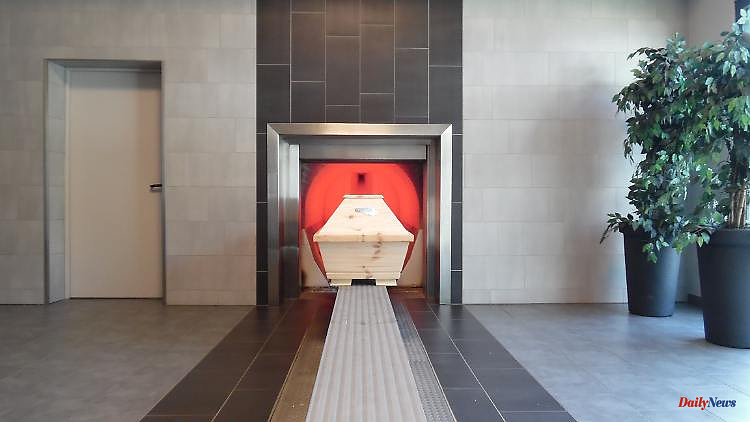The current gas crisis is causing problems for the crematoria in Germany. For the cremation of the deceased, large quantities of the raw material, which is becoming increasingly expensive, are required. A crematorium in Rhineland-Palatinate shows how things can be done differently.
Karl-Heinz Könsgen is a little proud. Not only because he is the managing director of the largest crematorium in Germany. His crematorium made it: At the beginning of August, two cremation units went into regular operation there, which can be operated almost without natural gas.
Of course, earning money by killing other people sometimes leaves a strange feeling. But Könsgen also sees his task in making the death of a loved one as easy as possible for the bereaved and to support them in one of the most difficult moments of their lives.
Up until six months ago, Könsgen could not imagine that he would ever have to worry about his gas bill, he says in an interview with ntv.de. Things have changed since the Russian war of aggression in Ukraine. "We just signed a new contract with our gas supplier. Our gas bill will increase sixfold from January 2023," he reports.
The crematorium and cemetery that Könsgen manages are in Dachsenhausen, a village with less than 1,000 inhabitants in western Hintertaunus in Rhineland-Palatinate near Koblenz. He calls his crematorium a "house with open doors". He wants to show how a modern operation of this kind works. More and more people are taking advantage of this offer, from relatives of elderly people to school classes.
Crematoria are becoming more and more important: according to a report by the German Press Agency, 75 percent of Germans have now opted for cremation after their death.
Cremation or cremation - that's what the experts call the process, which is popularly referred to as "burning". Important here are firebricks, which get very hot and store the heat for a very long time. They are located in the cremation facilities and provide the necessary heat. The more stones, the hotter the facility can get and the longer the heat can last. During the cremation, the system is first started, which takes about two hours. Then the coffin with the dead is pushed in, and the cremation begins - at a temperature of 850 degrees.
There are two types of facilities in the Rhein-Taunus crematorium, which are of different sizes. Six of them are the usual size, one could find them in other crematoria. They contain thirty tons of fireclay bricks. Three of these six systems are currently in use.
The other two plants are huge. There, 88 tons of fireclay bricks provide the necessary heat. Although these systems are more expensive to build, they consume significantly less energy because they can retain heat much longer than their smaller sisters.
Many crematoria work regionally. You are not tall. Not even half a dozen cremations occur there every day. Your systems must therefore be started and heated up once a day. Many of them need gas for this: up to 70 cubic meters, says Koensgen, with each start-up. So up to 1,400 cubic meters per month. A single cremation system uses as much gas as a two-person household in a good quarter of a year.
For this reason, ecological crematoria have been considered for a long time. In recent years, scientists have been experimenting with different ways to save gas. The bodies of the deceased should be dissolved in lye, their bones shattered before cremation. So far, however, there are no really practical solutions. In Germany, the very strict legislation speaks against it.
The Rhein-Taunus crematorium in Dachsenhausen therefore came up with a comparatively simple solution: "We simply no longer start our two large systems. They run continuously, 24 hours a day," says Managing Director Könsgen. "They've been running non-stop since the beginning of July."
The units work almost without personnel. People are only needed to start the cremation process - and for constant monitoring. And above all: Just three cubic meters of gas are needed for the starting process, almost a twentieth as much as with conventional systems.
But the two units in Könsgen's company don't run entirely without gas either. From time to time they need to be shut down and restarted for maintenance. Nevertheless: Könsgen no longer seems to be really afraid of the gas crisis. His two gas-saving units have been in regular operation since last Monday.
In the meantime, other crematoria operators have also become aware of the idea. He says he has already talked to about two dozen people who are interested.
Even if less gas is used with this method, the survivors could soon face higher costs for cremation. Because the conversion will be expensive for the 160 crematoria that exist in Germany. And the solution from Dachsenhausen is out of the question for small municipal crematoria anyway. They will have to switch to LPG or electric systems.












